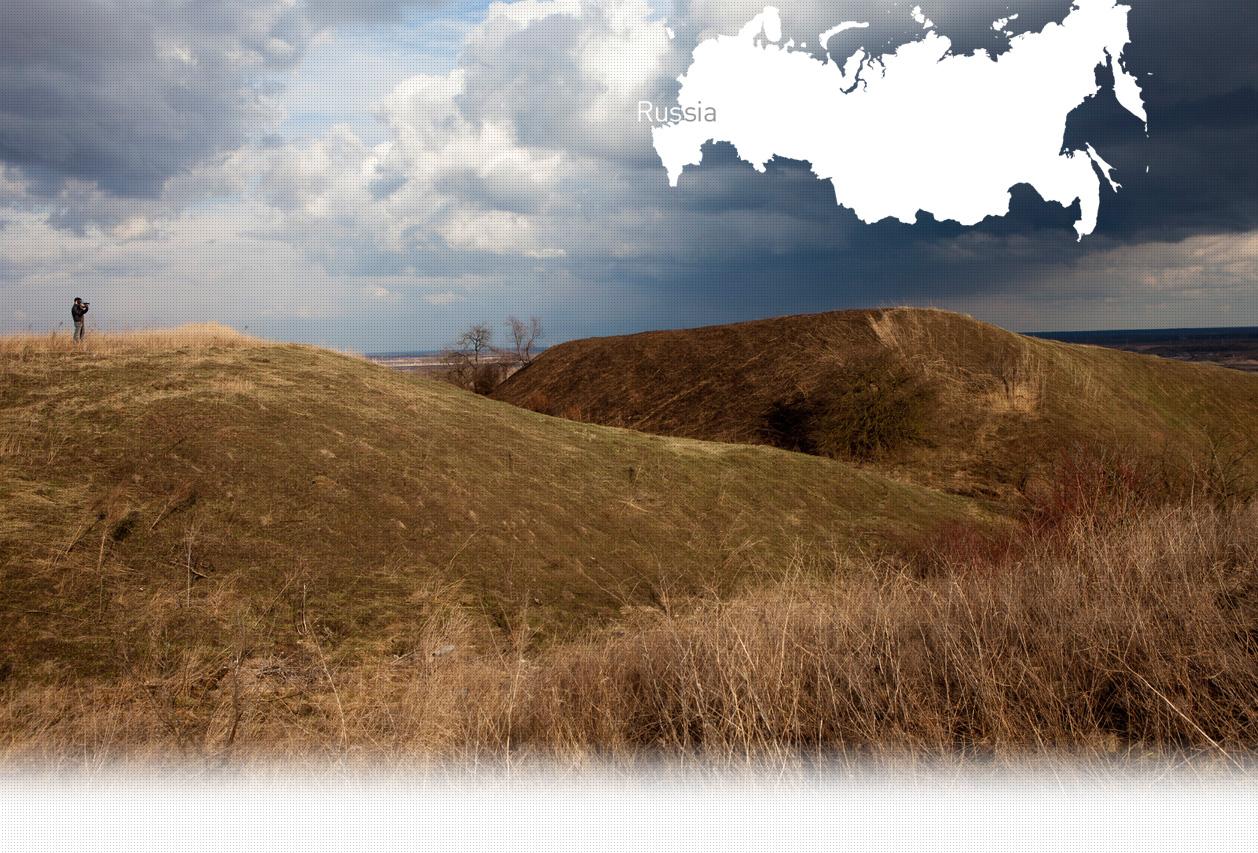

2 Killing site(s)
Aleksandra G., born in 1930: “We were displaced because we were considered a partisan family. The Germans stayed in our house, while we were moved. They rounded us up at night. We were forced into a truck and taken to the [military] settlement. There was a big military settlement here. So we all were gathered there. Once there, people kept coming and coming. There were more and more people after a time. More and more. The Germans continued to bring others. We found out that many German officers were killed when the German theater was blown up. That is why they started to round people up, force them into the wagons and take them away. There were people from the Porkhov village and others nearby. Entire villages were burned down. They also shot people…They even burned people alive inside the barns. They would gather them in the barns, lock the doors and set it on fire. Everyone would be burned alive. That is how it was! […]
Y. U. : So, did you see prisoners of war at this military base you were confined in?
Witness : No, I didn’t. We were locked up in the buildings. And once we were locked up, we couldn’t see anyone, not even the Germans. The windows were boarded up so we couldn’t even glimpse them. We were simply locked up and couldn’t see anything.
Y. U. : Were there watchtowers and barbed wire around the military base?
Witness : There were watchtowers. Yes, there were watch towers…But whether it was fenced in with the babe wire or not? Only the barracks with the prisoners of war were fenced in with barbed wire. The barbed wire was built in the fields behind the military settlement. That’s it. That territory was fenced in with barbed wire.” (Witness n°364, interviewed in Porkhov, on September 2, 2012)
“ […] In 1943 the Hitlerites perpetuated a bloody massacre against the town’s Jews. On one night alone, more than 40 Jews were shot including an elder woman, Berta, who was taken from the nursing home for handicapped people. […]
The camp, located 8km away from Porkhovo in Krasnoye Zapolyanye, was known as a death camp among the locals. It operated between the end of 1942 and the beginning of 1944. According to rough estimates, around 10,000 people / inhabitants of Porkhovo district and people brought from other districts and regions / were shot there during this period. According to eyewitnesses, the executioners shot 40 to 50 people every night in the bushes located about 0,5 km from the camp. They shot elderly people and children, Jews transferred in from Riga and gypsies. For example, in August-September 1943, a group of 160-180 Gypsies, elderly people and children among them, was brought to the camp and shot. Before the retreat, the Germans dug up the bodies of the victims and burned them after covering them with petrol.” [Act drawn up by Soviet State Extraordinary Commission (ChGK) on May 11, 1944; GARF-7021-39-432]
Porkhov is a town located on the Shelon River, 75 km (47 mi) east of Pskov. The first records of Jews settling in the town date back to the late 19th or early 20th century. In 1926, there were 264 Jews in Porkhov, but their numbers declined.,The majority of Jews lived off handcrafts or small-scale trade. The community didn’t have a synagogue, but there was a prayer house. The Jewish children went to the local school with the non-Jewish children. On the eve of the war in 1939, 175 Jews lived in Porkhov, comprising only 1% of the population.
Porkhov was occupied by the Germans on July 11, 1941. By this time the majority of Jews, mainly the richest, had managed to evacuate. At the end of 1942, a concentration camp known as ’Dulag 100’ was created in Zapolyanye, located 8km away of Porkhov. About 85,000 people, including Jews, Roma, and other nationalities, not only from the Porkhov district, but also from nearby districts and regions, as well as Soviet POWs were confined in this camp during the occupation. According to some sources, during the Nazi occupation groups of Jews were sent to camps in Pskov by train. Jews from Porkhov were also sent to labor camps located in the Baltic countries. The executions of the camp inmates were conducted regularly, mainly at night, to avoid anyone witnessing the atrocities. According to the Soviet archives, a group of 40 Jews was murdered in 1943 in the silo pit located 500m away from the camp. Another shooting of about 160-180 Roma was conducted in late August or early September 1943. According to a witness who saw the column of Roma being taken to the execution, they were murdered by local policemen who took all their valuables and belongings before shooting them to in a bomb crater.
Do you have additional information regarding a village that you would like to share with Yahad ?
Please contact us at contact@yahadinunum.org
or by calling Yahad – In Unum at +33 (0) 1 53 20 13 17